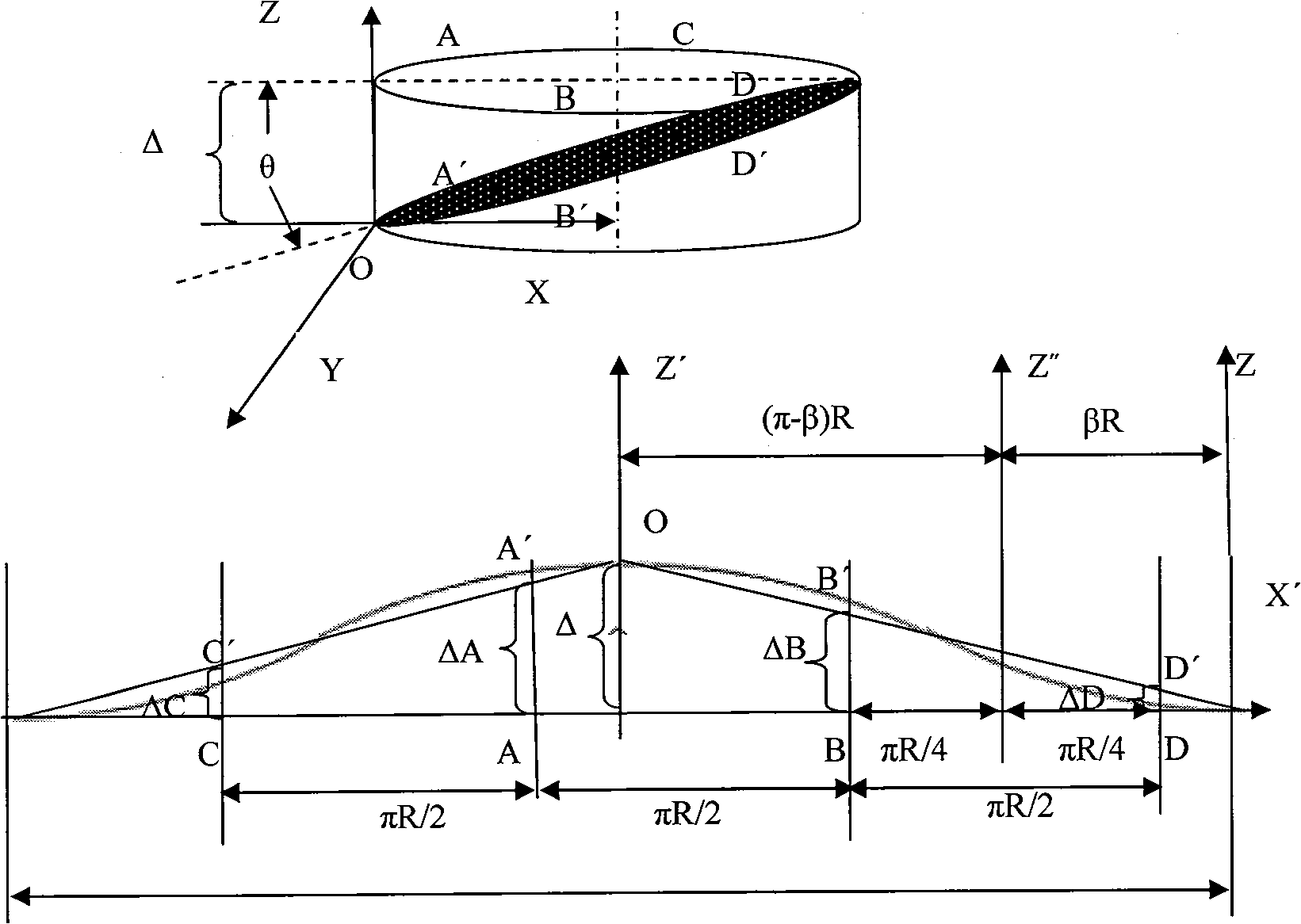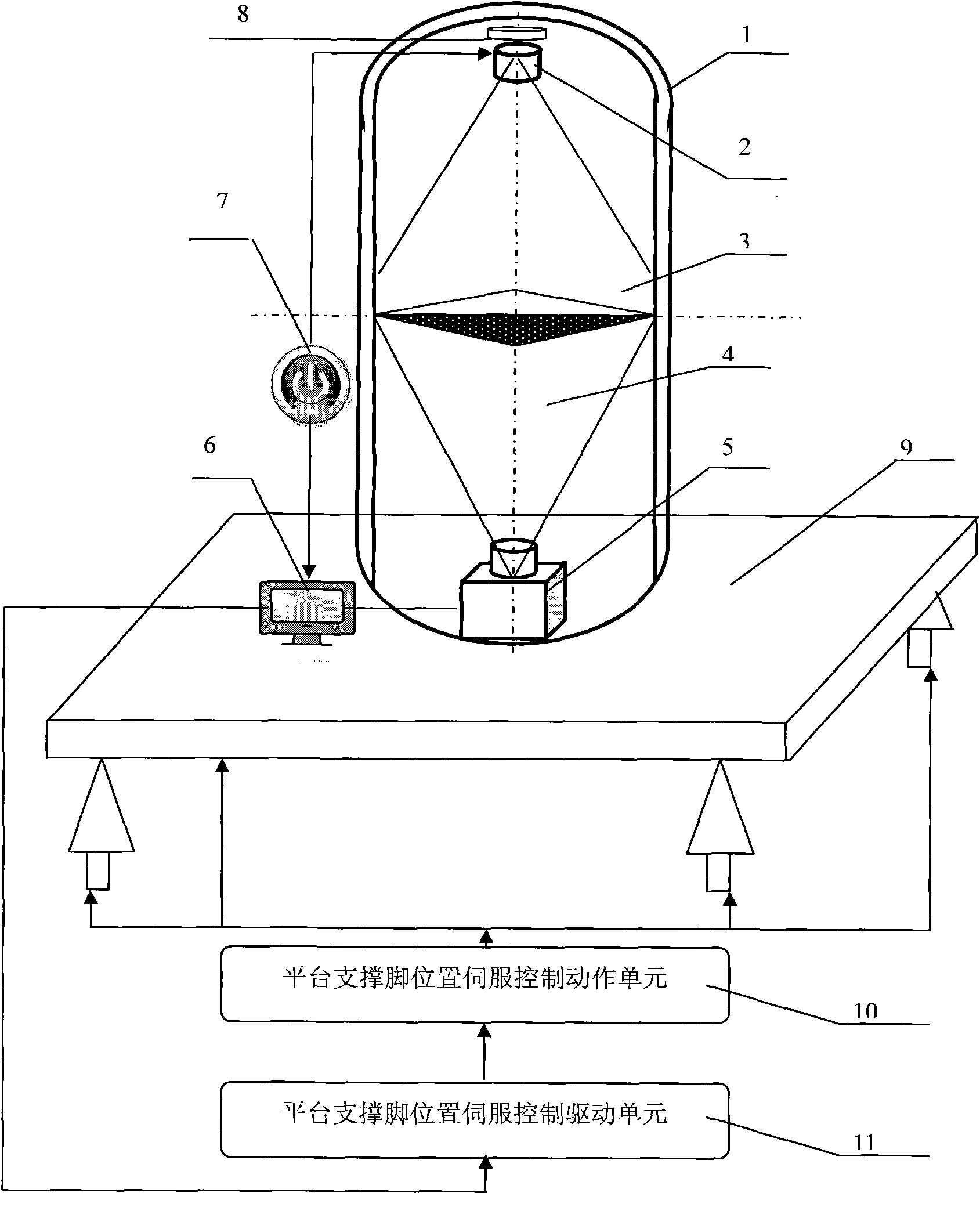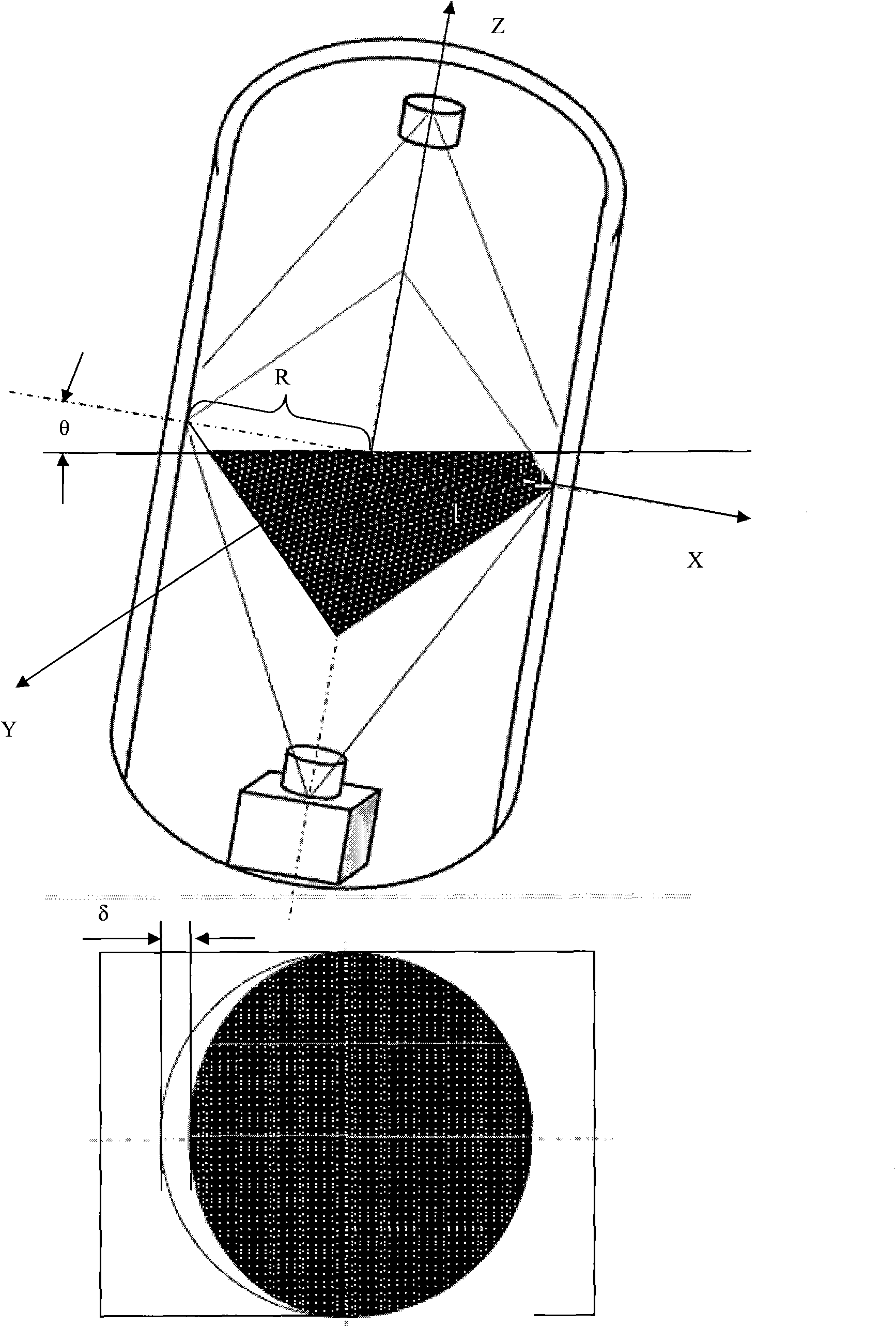Platform automatic leveling device based on machine vision
An automatic leveling and machine vision technology, which is applied to the parts of the instrument, instruments, non-electric variable control, etc., can solve the problems of high manufacturing cost, high requirements for the use environment, poor visibility and maintainability, etc.
- Summary
- Abstract
- Description
- Claims
- Application Information
AI Technical Summary
Problems solved by technology
Method used
Image
Examples
Embodiment 1
[0076] refer to Figure 1 to Figure 11 , Figure 14 , Figure 15 , Figure 17 , an automatic platform leveling device based on machine vision, including an omnidirectional tilt sensor housing, LED lighting source, transparent cone container, opaque liquid, camera, embedded system, power supply, compass, platform, platform support foot position The servo control action unit and the platform support foot position servo control drive unit, the power supply supplies power to the lighting source and the embedded system, and the embedded system supplies power to the camera through a USB interface. The above-mentioned transparent cone container is formed by combining two cones of the same size into a closed container in a back-to-back manner; The LED lighting source is fixed with the camera at the bottom; the LED lighting source emits white light toward the center of the transparent cone container facing downwards, and the camera senses the camera toward the center of the transpar...
Embodiment 2
[0138] All the other are the same as embodiment 1, the difference is the leveling algorithm using the highest point, such as Figure 13 , Figure 16 As shown; the "highest point" leveling algorithm is to keep the highest point still during leveling, and other support points move upwards to align with it. When each point reaches the highest point, the platform is in a horizontal state, as shown in Figure 13 shown; the specific implementation method is: according to the signals of the tilt angle and tilt azimuth angle detected by the omnidirectional tilt sensor, determine the highest point of the platform, and use it as the origin of the coordinate system, and then calculate the position from each support point to the highest point Error; send this error value to the respective servo system, drive the motor to turn a certain angle, and make the outrigger rise a given distance, so that each point is at the same height and the platform reaches a horizontal state;
[0139] Figu...
Embodiment 3
[0158] All the other are the same as embodiment 1, the difference is the leveling algorithm using the middle point, such as Figure 12 , Figure 18 As shown; the "middle point" leveling algorithm is to control its movement direction and displacement according to the calculated difference between the support point and the middle point during leveling, and align with the middle point. When each point reaches the middle point, the platform That is, in a horizontal state, such as Figure 12 shown;
[0159]The specific implementation method is: according to the signal of inclination angle and inclination azimuth angle detected by the omni-directional inclination sensor, determine the highest point and the lowest point of the platform, and take the middle point of the highest point and the lowest point as the origin of the coordinate system, and then calculate each The position error from the support point to the middle point; send this error value to the respective servo system, ...
PUM
 Login to View More
Login to View More Abstract
Description
Claims
Application Information
 Login to View More
Login to View More - R&D
- Intellectual Property
- Life Sciences
- Materials
- Tech Scout
- Unparalleled Data Quality
- Higher Quality Content
- 60% Fewer Hallucinations
Browse by: Latest US Patents, China's latest patents, Technical Efficacy Thesaurus, Application Domain, Technology Topic, Popular Technical Reports.
© 2025 PatSnap. All rights reserved.Legal|Privacy policy|Modern Slavery Act Transparency Statement|Sitemap|About US| Contact US: help@patsnap.com



